Estimated reading time: 30 minutes.
August/2017 – The EOS T7i is Canon’s seventh generation all-in-one Rebel camera. A lineup that tries to pack every technology available in a portable, easy to use body, it perfectly balances usability, design, ergonomics and most importantly price; excellent for the beginners on the EF/EF-S lens ecosystem, as well as professionals looking for an inexpensive backup. While the older T2i and T3i shared the same internals of its contemporaries 60D and 7D, Canon stopped this logic with the T4i/T5i; just to go back to it with the 2016 T6i; virtually a clone to the excellent 70D, except for the Dual Pixel focusing during Live View. But surprisingly Canon did repeat such logic on the T7i, and it’s nearly identical to the EOS 80D; one of the most capable cameras in Canon’s history.

Just like the EOS 80D, the Rebel T7i leaves everything in the past. For the first time the Rebel ergonomics were updated, with a much deeper right hand grip comfortable to work even with the largest lenses; a laugh at the mirrorless market that can barely balance an APS-C zoom. For the first time the button feedback abandons the clickish Rebel finish opting for the smooth, silent touch invented on the 6D; the premium approach missing on Canon’s entry level. And also for the first time on a Rebel camera, we get Canon’s game changing Dual Pixel focusing, used during Live View and video recording. If that wasn’t enough, Canon added the same 45-point AF module from the 80D; Bluetooth connectivity supporting the EOS’s M5 low-energy mode; and the new DIGIC7 processor. For just US$699 you get Canon’s latest tech, all in a portable, light and easy to use package. Is it the ultimate camera to be in your backpack? Let’s find out! Nice reading.

At 13.1 x 9.9 x 7.6cm of 532g of mostly plastics, the first thing we notice on the T7i is its weight; the third lightest camera on Canon’s lineup. At 73% the weight of an EOS 80D, or 63% the mass of the EOS 5DS that I use everyday, the T7i’s half kilo impresses by how Canon managed to create such a robust and capable camera in such a small package. While the internet’s darlings Sony A6300/A6500 and Fuji X-Pro2/T2 mirrorless are all lighter and fully metal, we can’t deny how fragile they feel; full of sharp corners and dials waiting to be bumped; hard to recommend as a throw-it-in-your-backpack, workhorse kind of cameras. But not the T7i: it’s made to keep up with the everyday photographer, and it’s a pleasure to use. And the secret lies just as the EOS 80D: this Rebel features all-new ergonomics, and the magic is in its details, felt with the camera in hands.

You can’t tell it by internet photos, but the EOS T7i grip is all-new. In the same way the 80D got a giant leap in design to the EOS 70D, on the T7i Canon pulled all the panels to the back, making the right hand grip much deeper; by far the deepest I’ve ever used on an APS-C camera. While the T6i offered about 2cm of grip to the right hand, already a laugh at the mirrorless market, the T7i features an incredible 2.9cm deep grip, much more comfortable to use without bending your fingers. It seems stupid to dedicate a paragraph just for the hand grip when the internet is obsessed with “dynamic range” and ISO performance, but hats of to Canon’s ergonomics: they make the most comfortable cameras on the market, and the ones you’ll actually want to use all day.

At the front your fingers perfectly hug the right hand grip, fitting a very sharp corner, impossible to slip by accident. If that wasn’t enough, at the rear Canon kept the T6i’s rugged panel, not as deeply cut as the EOS 80D, but smoother around the edges; pulled to the outside whereas the older Rebels were pushed inside. As Canon’s Rebel lineup makes do without an AF-ON button, with only * and + “shoulder” controls, also excluding the rear thumb dial (featured only on the 77D and up), it makes sense to keep your fingers tightly closed at the front of the camera, freeing your hands at the rear. Simply grip the camera at the front, and use your thumb to comfortably reach the controls at the back: it’s impossible to let the T7i slip, AND it’s super comfortable to use.

Most of the controls on the T7i are on the right hand side, including the main exposure dial, saving precious space on the camera’s body; making it one of the smallest DSLRs on the market. At the top the main dial is practically at the same position of the T6i, and it’s divided in two zones: automatic, with options to turn off the flash, creative assistant (CA), portrait, macro, landscape etc, plus a new “effects” mode flirting with the Instagram generation. And the creative zone activates the semi-automatic modes P, Av and Tv, together with the fully manual M mode. This dial is robust and a pleasure to use, and it sits on top of the ON/OFF switch, that includes the dedicated movie mode. When it’s time to take photos you simply select one of the exposure modes and 1) use the optical viewfinder, the soul of every DSLR or 2) activate the Live View mode using the rear button, to display the real time image on the rear LCD screen. And when it’s time to shoot videos you simply push the ON/OFF switch to the camcorder icon, and the image will be previewed on the screen.

Still at the top, at the front Canon repeats the dedicated ISO, DISP. and auto focus selection buttons, perfect to get users used to the rest of the EOS lineup; all with nearly the exact same layout. They sit behind the second/main exposure dial, used to select both aperture and shutter speed values on Av and Tv modes; paired with the rear +/- button distinct of Rebel cameras. This dial is also raised on the camera, easy to use, much better than Fuji’s and Sony’s recessed dials; Canon just gets that this camera will be used by human hands. And finally at the front the two stage shutter release activates the metering and auto focus modules. It features a distinct “click!” compared to other buttons, the same as the EOS 80D, but different from the full-frames 5D/6D that use a much quieter/softer shutter button; made to keep vibrations to a minimum.
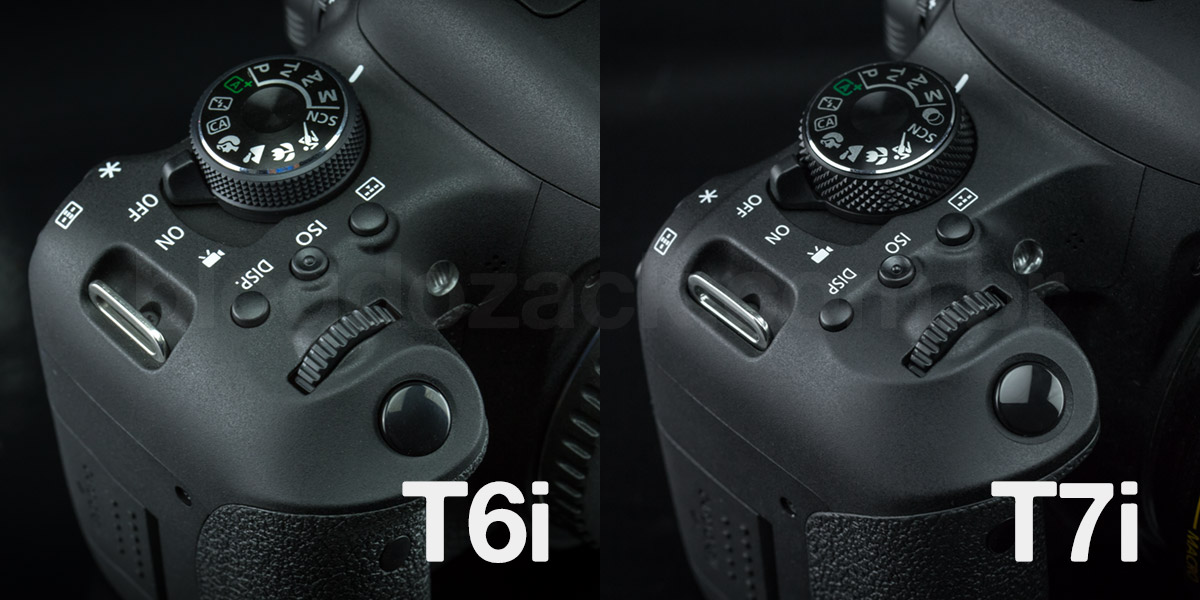
At the rear the EOS Rebels are packed with the same button layout since the first model, but the T7i didn’t stop in time: it now features a new wireless shortcut. Aimed at amateurs, the overall simplified button layout sports a double function: to keep the camera portable, with less buttons; but not to loose the tactile feedback known to Canon’s EOS cameras. For those looking for physical buttons, Canon repeats its eternal DRIVE (left), WB (up), AF one shot/servo (right) and Picture Style (down) arrows surrounding the main central SET, found at the top of other cameras. These same buttons are used to navigate the on screen menus, switch auto-focusing points, and to playback the photos back and forth. However this is another “downgrade” to a Rebel camera, making due without Canon’s famous rear thumb jog dial, faster to circle from shot to shot on larger cameras.

Still on the right hand side, five buttons simplify the T7i’s usability. “Av” and “+/-“ share the same click button, used to cycle between the exposure compensation and both the aperture setting/shutter speed, in auto/semi-auto modes. The Q button (“quick”) activates a dedicated shooting menu (no clock, SD card formatting, for example), and displays either a substitute to the absent top LCD (the one on top of the right hand grip from the 77D, 80D etc), or an overlay during Live View operation. The new Wi-Fi button is a shortcut to connect the camera with a smartphone, incredible useful if you’re planning on keeping both tethered (we’ll talk about it later). A finally the playback and delete (garbage can icon) are both on the same side, within thumbs reach; an ideia I’d like to see even on larger cameras (the 5DS delete button is on the left side).
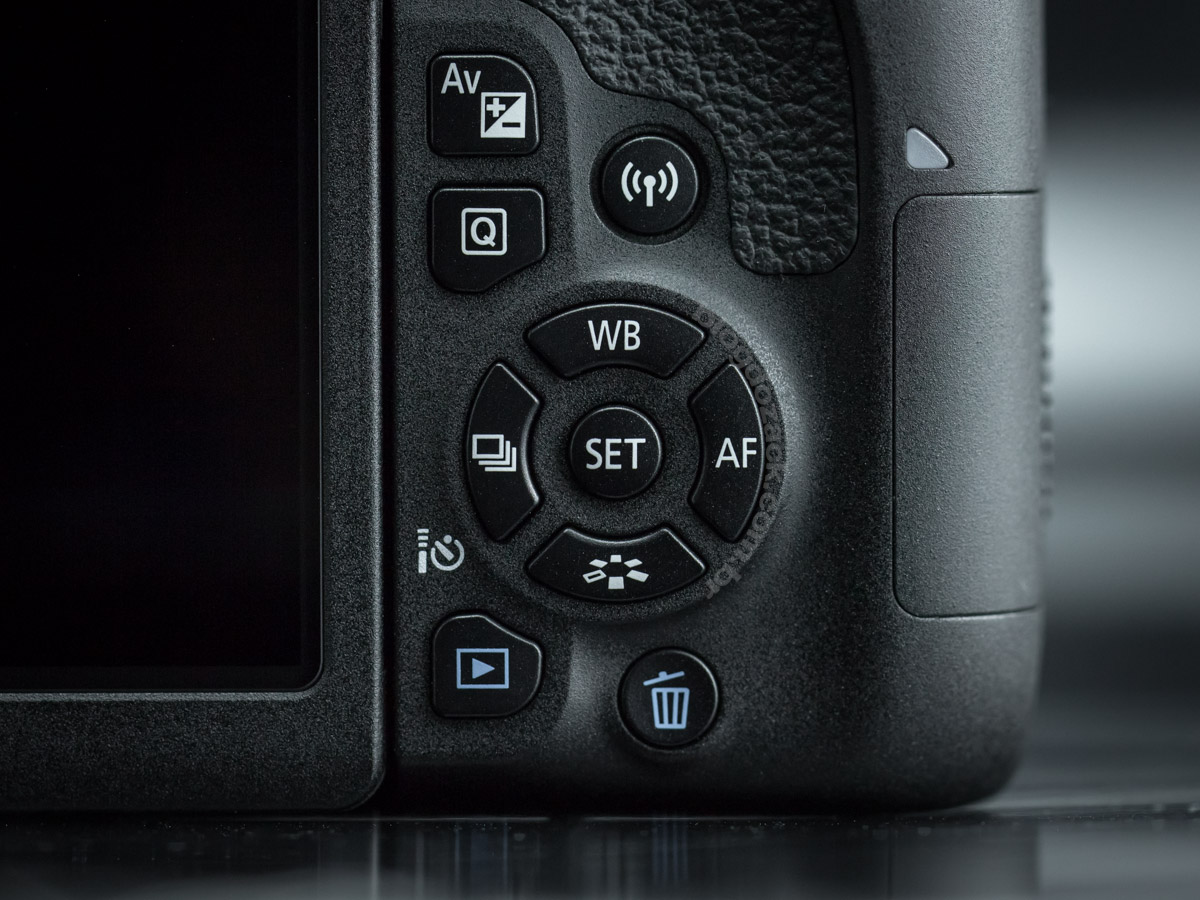
To the center-left the EOS T7i is dominated by the swivel LCD screen, and the optical viewfinder; the heart and soul of a DSLR. The first features incredible 3” at the sensor’s 3:2 ratio (hello, Sony A6500 16:9 BS screen!), with 1.04M dots and the Clear-View II tech, where the TFT panel is laminated with the cover plastic; thus reducing glaring. This screen is touch sensitive and features the fluid touch interface we saw on the EOS T4i from 2013; it can rotate outside of the camera facing 180º forward (for selfies or self-recorded videos); or 90º downwards (to shoot above heads). And the viewfinder gets the second “cut” compared to the 80D: the optics consists of mirrors (penta-mirror) instead of the sharper, brighter pentaprism crystal found on the more expensive cameras. However the magnification remains at 0.82x between both cameras, together with the Intelligent Viewfinder II tech for displaying overlay data on the lens image. On the other hand the EOS 80D sports a full 100% coverage viewfinder, for precise framing, whereas the T7i covers just 95% of the frame.
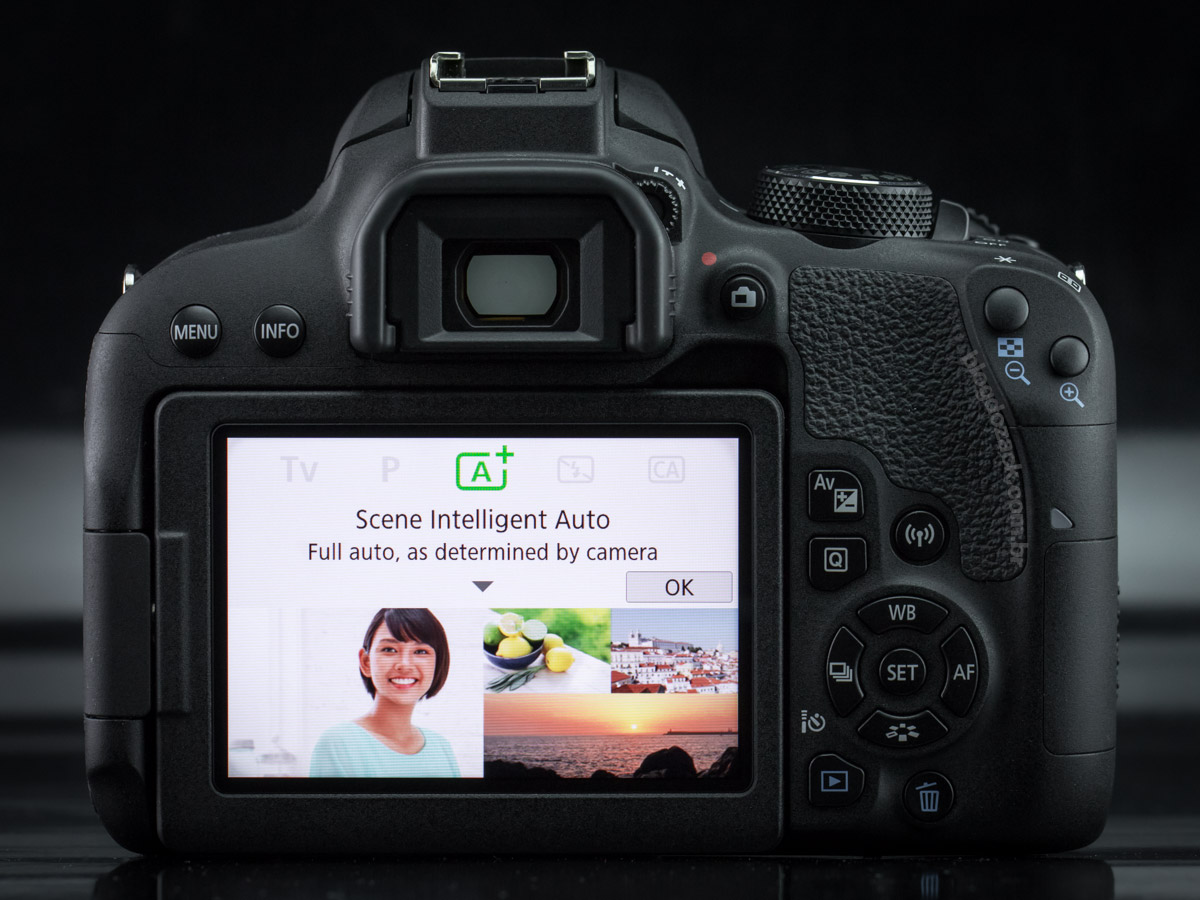
Finally on the T7i left “shoulder” the INFO and MENU buttons are self-explanatory. At the front it keeps the gigantic EF/EF-S lens release on the same side as the built-in flash releaser (top), and lens aperture preview (bottom); the Rebels are some of the few EOS cameras to feature this button on the left side. At the top Canon adds a guide-12 flash unit, with advanced second-curtain and optical wireless options, for pairing with Canon EX units; something mysteriously missing from the EOS M5. To the left the USB2.0 and HDMI ports are behind a rubber cover, separated from the mic-in and remote control plugs. But just like the EOS M5, and unlike the 80D, there’s no headphones-out plug, unthinkable for an over US$500 camera. Under the right hand side fits the single SD UHS-I card slot that, as the LP-E17 (1050mAh) bottom cover, is not spring-loaded; nor weather sealed. It’s different from the EOS 80D that uses the large LP-E6 (1865mAh) battery and features weather resistance.

The EOS Rebel T7i brings together Canon’s expertise with building robust plastic cameras, with their recently revised ergonomics, made better to use and work; but mostly ignored on internet reviews. Just like the EOS 5D Mark IV is a giant leap on the Mark III ergonomics; and the 80D is to the 70D; the T7i is much more comfortable than the T6i. For the first time I’m confident in recommending it even for the most seasoned PRO. Those looking for a complete but accessible camera, not letting go of Canon’s ergonomics and pleasure to use, the T7i is an affordable option to any other DSLR EOS; despite costing less. It’s easy to get carried away by Fuji’s and Sony’s cluttered mirrorless alternatives, but don’t fool yourselves: as a “real” camera, only Canon (and maybe Nikon) manages to get the layout just right, and the EOS T7i is the pinnacle of it for US$699.

As a good ol’ (or new?) DSLR, the simplicity and speed of the EOS T7i runs circles around any “alternative” camera nowadays; yes, I’m talking about the mirrorless market and your smartphone. With a mere 0.2s booting time, shooting intervals that vary from 0.01s (viewfinder) to 0.03s (Live View), and near always-ready shooting speeds, this is the main reason why DSLRs still dominate the professional market: they’re always ON, and there’s virtually no chance of missing the moment. While even the best iPhone can take over 02 seconds to activate the camera app, or Sony’s A6500 – made for speed – takes about 2-3 seconds to boot and fire the first shot, that just doesn’t happen on the EOS T7i. To turn it on or to wake it from stand-by happens instantly, and even to activate the Live View (that moves the mirror away) is faster than ever, in less than 1 second.
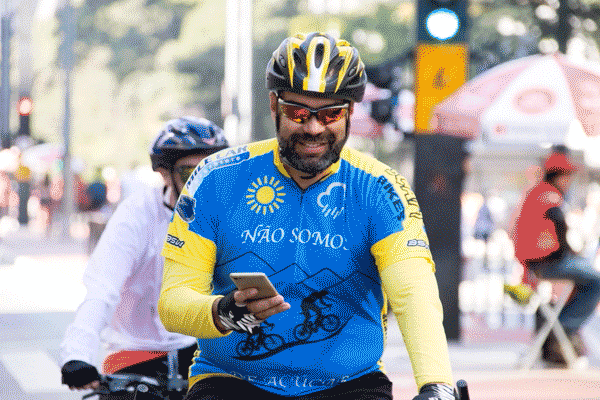
“Cyclist” with the EOS T7i + Sigma 18-300mm f/3.5-6.3 DC Macro OS HSM C at f/6.3 1/1000 ISO2000 @ 200mm.
Part of the EOS T7i agility comes from the all-new DIGIC7 processor, better than the 80D’s DIGIC6. Besides the novelty image processing algorithms (more about it on the image quality section), the DIGIC7 is responsible for most of the T7i “Rebels firsts” 06 frames per second shooting speed, with fixed focus and exposure; or up to 4.5fps with predictive SERVO AF+AE, never before seem speeds from a low-cost EOS. Another highlight for it’s price is the buffer depth for continuous shooting, before sending the files to the card: the T7i fits the same 18 raw+JPEG files from the 80D, or up to 24 raw (or infinite JPEGs); stats dedicated only to the best of the best cameras from yore.

So much speed takes advantage of another highlight from the EOS T7i: the 45-point phase-detection EOS 80D’s focusing module. While on that US$1199 camera I thought Canon wasn’t really pushing the boundaries in bringing an all-new focusing module, giving its three years development cycle from the 70D, to put the same AF system on the US$699 T7i is truly rebellious; this is one of the most capable cameras to automatically focus on the market. Not only every single 45-point is independently selectable, every single of them is cross-type, sensitive to both vertical and horizontal contrast. Virtually no mirrorless camera(at the time of writing) is capable of such, and we know how poorly they focus under low contrast. Also the T7i center AF-point is sensitive to -3EV, practically the light of the moon shinning on the sand at the beach. And even better this module is assisted by the 7560RGB metering sensor, also detecting infra-red distinguishing the human skin.

“Kyoto” with the EOS T7i + Tamron 10-24mm f/3.5-4.5 Di II VC HLD at f/6.3 1/10 ISO640 @ 10mm; darker venues are not a challenge to the T7i AF system.
Gone are the days I receive “my T6i can’t focus as well as my 5D Mark IV” messages; or “I missed shots due to the camera not focusing”. The new T7i is immaculate to focus, featuring the the same focusing selection methods as the EOS 80D: single, used to pinpoint your subject (the horizon, a single tree, an eye on a portrait); zone, that separates 9-points to select the focus on the closest subject, enhancing the camera’s chance to focus under SERVO operation (like a cyclist’s face); large zone, that divides the module in three equal parts and also great for SERVO operation (like a single player on a soccer field); and the automatic mode, that will select points biased to skin tones.

What really set both 80D and T7i apart, though, is the software that controls the AF module. Absolutely no options to configure the algorithm like shooting priority (focus/speed), or tracking sensitivity is present on the T7i, made to simplify it for amateurs; limiting it’s use by professionals. It makes sense: a 7D Mark II uses the incredible AI SERVO AF III from the 1D-X/5DIII with five adjustments tabs; the 80D sports a Custom Function II – Autofocus with 16 options; and the T7i has nothing. However it’s possible to use the T7i with its factory settings: using ONE SHOT, practically no image came out of focus during my tests, as long as you keep the AF points over your subject. And in SERVO mode the T7i shines: it’s possible to shoot complete 18 shots raw files, with moving subjects, with every photo in perfect focus; a peace of mind few entry-level cameras offer. So this is Canon’s ultimate bet to keep itself relevant on the market, rooted to its legacy: dependable focus.

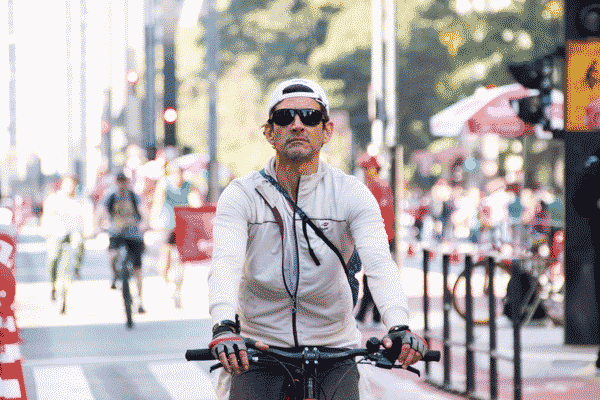
“Cyclist II” with the EOS T7i + Sigma 18-300mm f/3.5-6.3 DC Macro OS HSM C at f/6.3 1/1000 ISO1600 @ 200mm.

Crop 66%, EVERY shot in perfect focus, not sharper due to the lens limitations. (click to see larger)

Another incredible highlight of the T7i brings two Canon techs for the first time on a Rebel camera: the Dual Pixel image sensor, with on-chip phase detection in virtually every pixel; and the DIGIC7 processor, as fast as ever to keep up with moving faces around the frame. With two photo-sensors per pixel (thus Dual Pixel) Canon made possible for the Live View shooting to be as fast and as reliable in focusing as the viewfinder AF module; not seen in any other camera on the market (that uses generally some pixels; not all). And while on the recent EOS M5 I didn’t find the Dual Pixel implementation as useful, especially in SERVO mode, here on the T7i it is pushed ito its prime: it’s sensitive up-to -2EV, perfect for low-light shooting; the focusing area is up-to 80% of the frame; and using the face detection + SERVO modes, it’s nearly flawless, thanks to the new DIGIC7 processor. It’s simply everything we could expect from Canon’ Dual Pixel with fast, precise and reliable AF, elegantly delivered on the simplest EOS. Who could have though a Rebel could be this capable?
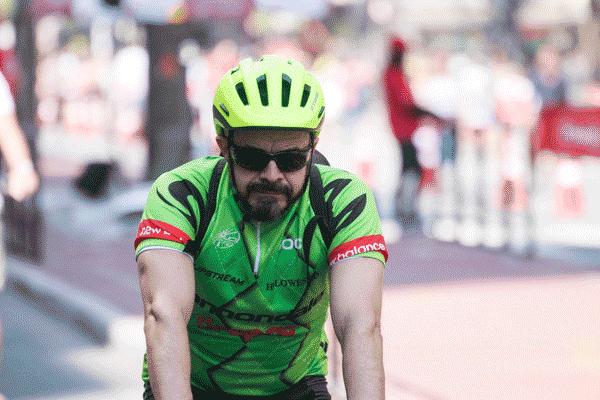
“Cyclist III” with the EOS T7i + EF 70-300mm f/4.5-5.6 IS DO USM at f/5.6 1/1000 ISO800 @ 300mm.
In ONE SHOT mode and single frame shooting, the Canon EOS T7i Dual Pixel focusing is also brilliant. The focusing is not fast: it’s instantaneous! With simpler lenses like the EF 50mm f/1.8 II, the EOS T7i focus instantly. With top of the line lenses like the EF 70-200mm f/2.8 L IS II USM, the T7i also focuses instantly. Be it using the face detection, manual, single Live point or zone modes, the T7i have no difficulty in finding and focusing on the subject, under any light condition. It’s incredible to see this level of performance using the rear LCD screen, that has always being seemed as an “amateurish” way of shooting. But it’s not! I guarantee you just like I guaranteed on the EOS 5D Mark IV review – also a Dual Pixel capable camera: if the auto-focusing prove difficult using the viewfinder, give the LCD screen a chance! Canon’s EOSs Dual Pixel is perfect to focus.
![]()
And SERVO continuous shooting, when the camera will not only track the subject X and Y axis (lateral), but its distance (Z axis) through time (predictive to the next shot), the EOS T7i f-i-n-a-l-l-y delivers everything the Dual Pixel promised back on the EOS 70D. Fast, precise, reliable focusing using the rear LCD screen during Live View, for perfect in-focus sequences; as long as you can keep your subject under the focusing area or choose the correct focusing method. Under auto-selection modes, the T7i can loose track of the subject (to focus on the subject at the back?) and fail to focus in case of an obstacle; partially due to the lack of adjustments to the AF algorithm. But it’s good under slower moving subjects, like photographing the kids over the weekend, or your friends at the bar. The T7i can easily pinpoint most subjects, and follow them around the frame, always in focus.

But to shoot real action, the “Smooth zone AF” and “Live 1-point AF” are better suited to reliably feed the SERVO system to predict the next shot. Using these methods, the photographer can even touch the screen to select different zones or subjects, leaving the camera with the solely calculation of the subject’s distance. It’s perfect to shoot cyclists moving towards the camera, or cars on a race track. And considering we’re using the rear LCD screen, the results are spectacular! In the past I understood Canon’s distinction between the amateur and professional market; between the viewfinder and the Live View. But on the EOS T7i Canon finally erased this division and anyone can use any method to photograph sequences in focus; brilliantly delivered on the entry-level EOS.

“Cyclist IV” with the EOS T7i + EF 70-300mm f/4.5-5.6 IS DO USM at f/6.3 1/1000 ISO250 @ 300mm.
Well, you know I hardly recommend Canon’s EOS DSLR/mirrorless cameras for video due to its chronic issues with raw image quality. I started using them since the 2010 5D Mark II, and by that time it was already obvious the lack of resolution from the 1920×1080 image, compared to a similarly sized photo file. Everyone also noticed the problems with moiré (fake colouring around repetitive manmade patterns) and aliasing (choppy diagonal lines) that could ruin the shot; film a subject wearing a plaid shirt and see the caos happening. And I did understand those were the issues from a hybrid camera; not a true video camera. And when I switch to Blackmagic’s Cinema Camera the difference in quality from the EOS Movie sealed the deal: I just couldn’t recommend a Canon EOS DSLR anymore; not for pros, not for serious amateurs.

“SP” with the EOS T7i + EF 24-70mm f/4L IS USM 1080P30; notice aliasing and moiré. (click to see larger)
Since then Canon has been trying to balance the amateur market, ever more interested in shooting their own videos (hello, YouTubers!) and the professional market, with a specific EOS C lineup made nearly perfect picture-quality wise; despite their exorbitant price point. And the T7i obviously sits on the lower end of the spectrum, however pushing Canon’s image quality upwards; which is not that hard to begin with. The DICIG7 processor solves part of the issues coming from the photography-oriented image sensor, and changes the focus (no pun intended!) to the easy of use of the Dual Pixel AF. In times of 4K (3840×2160) smartphones it’s easy to be let down by the T7i’s 1920x1080p, but other features like the touch sensitive swivel LCD screen, and the flawless AF system during video recording, make this camera one of the best for budget shooting, with plenty of image quality to be posted on the web. Mission accomplished by the EOS T7i.

For those interested on the technical aspects, the EOS T7i records 1080p video at 60fps via line skipping the APS-C sensor, compressed to 60Mbps at 59.94fps; 30Mbps at 29.97fps; both coded through IPB (inter frame B) on standard setting; or at 12Mbps at 29.97fps (1/3 of the size) on the IPB “light” setting. At 720p60/30 the T7i also uses the IPB-S or IPB-L scheme respectively, and there’s a final VGA option; all mysteriously missing from the EOS M5. On the other hand the T7i doesn’t offers the ALL-I (intraframe) of the 80D, but it doesn’t make much of a difference; none is particularly advanced for video capture. What the DIGIC7 provides the T7i is a new Digital IS stabilizer, using a sensor crop to electronically stabilize the image with enabled (on) or enhanced modes; the bigger the crop, the bigger the compensation. And the T7i can use the extra 24MP sensor resolution to provide a digital zoom mode (3-10x), with lossless quality up to 5x.
On the end of the day the Canon EOS T7i is a very capable video camera, easy to recommend for the entry-level market considering its features and price point. For the first time Canon brought the Dual Pixel reliability to a cheap camera, and there’s really no competition on the market: no other brand offers auto-focusing capabilities this good, nor they are as easy to use. Sony’s A6300/A6500 are very interesting for their low-cost 4K files, similar in features to the US$30.000 FS65. But their autofocus and rear-only swivel LCD screen can’t compare to Canon’s, making it too hard to record videos by yourself; not out of the box (you’ll need to add an external monitor); and it can’t match the EOS’s price. Nikon do have an excellent alternative on the D3500, but it doesn’t offer anything close to the T7i’s Dual Pixel, so overall the EOS T7i is great for what it is, and worth the recommendation: it’s reasonably good video camera at this price point.
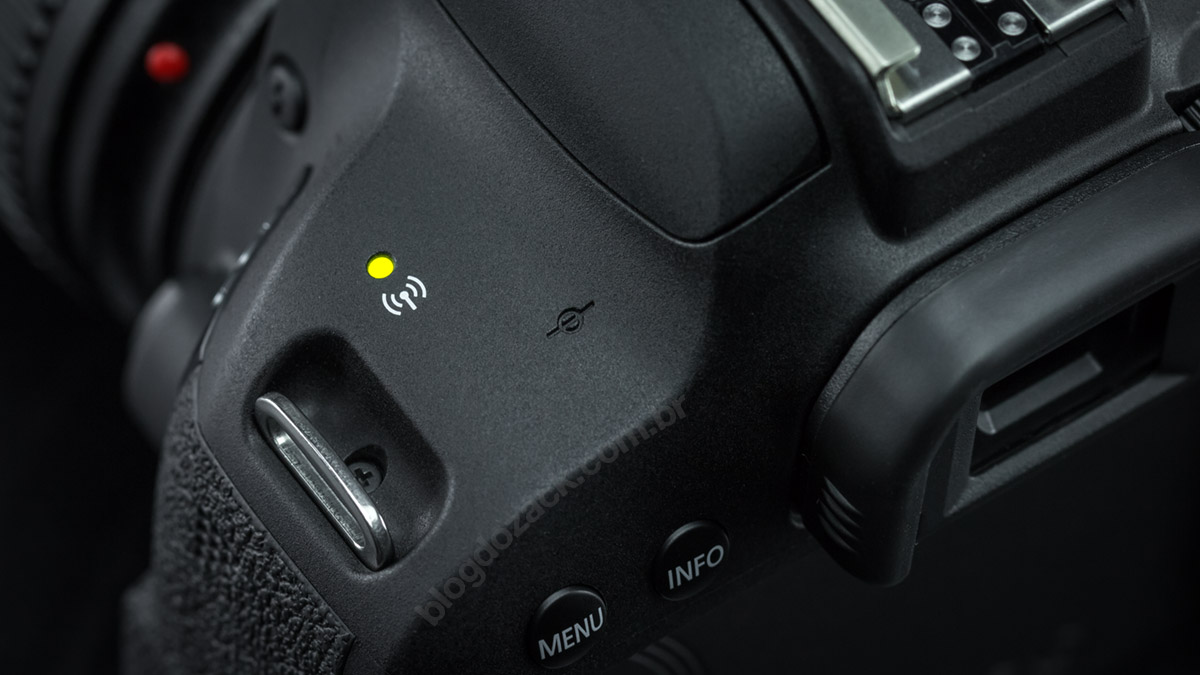
Another area where Canon clearly have an advantage over the rest of the photography market that’s, once again, easy to oversee compared to its peers, is how it manages the EOS camera’s wireless functions; simply the most robust, feature-filled and easy to use on the market. The T7i offers a complete set of wireless connections: Wi-Fi, fast and reliable to wireless transmit your photos directly to the internet, or to almost completely control the T7i over-the-air, including an-all wireless Live View mode; NFC, for easy pairing your smartphone/tablet; and now even Bluetooth, not found on the EOS 5D Mark IV and introduced first on the M5. The idea is to keep both devices connected using its low-energy mode, for a flawless experience with minimal battery impact.

It works like this: on your smartphone, download the Canon Camera Connect app, free on Google’s and Apple’s app stores. On the camera you simply press the wireless button and pairing starts (but only for the first time you’re using it): the camera warns you when to go back to the mobile device and set it up via Wi-Fi; and when one finds the other, using Bluetooth or NFC, it’s done; that’s it, they’re paired for life! On the app it is possible to wireless control the Live View function (Remote live view shooting), that will broadcast from the camera to the app every on screen setting in real time; including the image preview, amazing to work by yourself around the studio. Be it to shoot selfies, with the camera mounted on a tripod; or to record a video-log; every option for exposure, focusing, white balance etc is available on the smartphone/tablet screen, including the touch controls and the options to select video or photo modes (over writing the camera’s switch).

The “Images on camera” function makes possible to download the SD cards files to the device, making it ready to share over social media, including high-res files, in real time, good for backups as well. So besides being able to share image from your phone, it can easily be used on the studio on a tablet, leaving it on your clients hands to see the camera’s images as soon as they’re taken. And travelers can use the smartphone’s GPS location to tag the T7i’s files and place them on a map, just like a modern app. While the Canon EOS 6D comes with a GPS built-in, it uses a lot of battery; but the 7i can do it with minimal battery usage, as the GPS data comes via BT-LE.
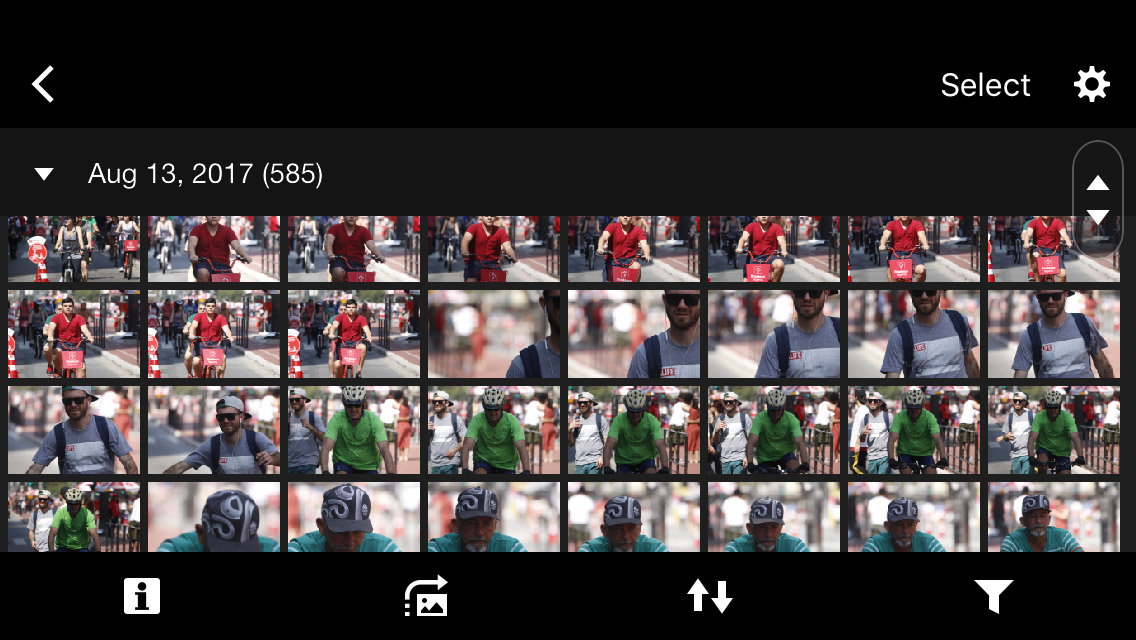
When using only Bluetooth, new features unlock. The EOS T7i can connect to the smartphone as a mere accessory, saving battery without losing function. It’s still possible to control de camera from a distance, but only to start/stop shooting; not broadcasting the Live View image (that requires the faster Wi-Fi protocol). And when it’s time to switch between WF/BT, both devices “understand” each other for a flawless operation. And finally if it’s too hard to use the smartphone (duh), the T7i bluetooth supports Canon’s new Remote Controller RC-6. It’s by far the best wireless options on the market, complete on Canon’s entry level Rebel camera.

One last feature that’s is very interesting for those starting with Canon’s cameras, is the new guided interface mode; a full-featured course on how to operate such a complex device, as the modern DSLRs has become. Out of the box the T7i comes with a guided interface active on the main dial mode (the one at the top, with automatic and creative zones); guides for the camera’s menus, with a new bright background and self-explanatory icons for clock, Wi-Fi and SD card; exposure guide with interactive sliders for shutter speed, lens aperture and ISO; and a feature guide, displaying a pop-up overlay for each menu option. Instead of Canon’s dark, tabbed menu, or the rear LCD always turned off, the manufacturer took the opportunity to teach the amateur photographer the options available from a true DSLR, with a nice, elusive, easy to use interface; great for newcomers.

On the automatic modes, the rear LCD screen shows practical examples with photos of what’s possible with every function. Up and down arrows reveals text descriptions of the chosen functions, giving tips on framing and exposure for best results. On creative modes (P, Av, Tv, M) the interface changes to giant icons that clearly represent each adjustment. On Av, for example, the camera shows how the background can look blurred using smaller f/stops (larger aperture); or Tv shows the subject’s trail using slower shutter speeds; with extra options for continuous shooting and image quality clearly identified; great for those who never owned a DSLR. And on the menus the guided interface makes everything better even for PROs: the white and red menu scheme makes it much faster to see and identify the icons, all touch-sensitive like a smartphone. It’s nice and simple for the amateur, and an extra reason to get the T7i as a first serious camera.
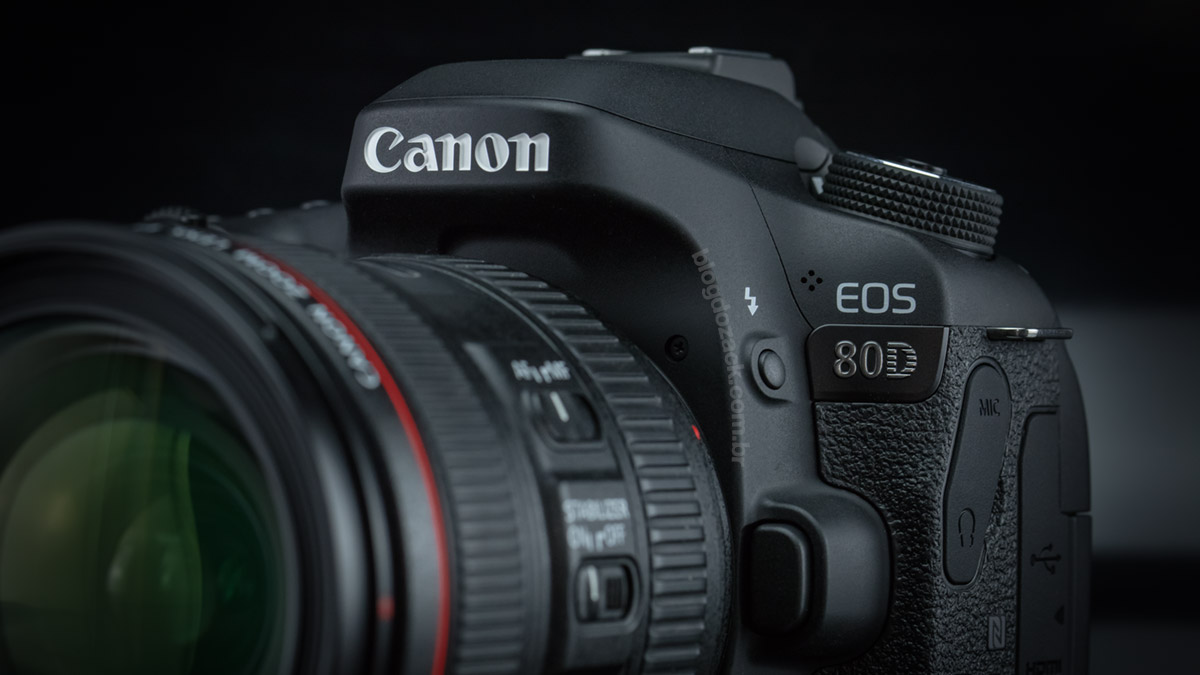
With so many features, Canon honestly went as far as possible to make the EOS T7i so attractive, creating such a great camera that begs the question: what’s the point for the more expensive 80D? But both cameras are very different, and the purchasing decision is reasonably simple. First the EOS #0D (60D, 70D, 80D…) is “the smallest DSLR” Canon offers keeping the same overall button layout of the larger 5D, 6D and 7D. The 80D also uses the same 1850mAh LP-E6 battery, perfect for future upgrades or to use it as backup, also sharing the chargers; as the EOS T7i uses the much smaller 1050mAh LP-E17 pack. So from the get-go the Rebel and #0D lines are very different, one for intermediary/advanced users; and the other for the entry-level market.

Also the EOS T7i and 80D usabilities are completely different. The 80D sports both rear-thumb and frontal/top-index finger dials, whereas the T7i uses only the top dial, asking for an extra double-function button at the rear. This simplified layout makes it slower to switch some exposure values as you must press the +/- button to activate the exposure value OR the exposure compensation setting; whereas the 80D keeps both separated on each dial. Also the 80D features menu tabs absent from the T7i, specially to setup the focusing module. The 80D features a motorized mirror box, with faster maximum shutter speed (1/8000); up to 7 frames per second shooting rate; and the pentaprism crystal inside the viewfinder; while the T7i makes does with a spring-loaded mirror, reduced shutter speed (1/4000); up to 4.5fps AF+AE shooting rate (6fps without it) and a penta-mirror viewfinder; expensive parts for Canon to use on the T7i.


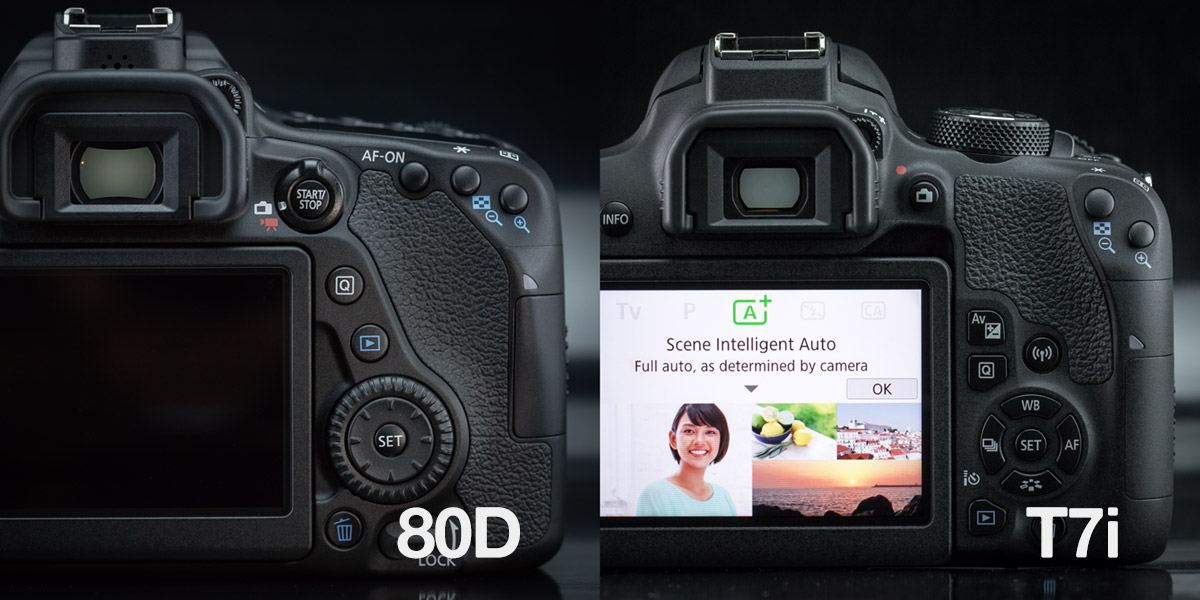

But not all is lost on the T7i. As it’s recent, Canon opted for the new DIGIC7 processor, faster to detect and follow the subject’s figure than the 80D’s DIGIC6, besides offering new ideas like better JPEG processing and the new Digital IS during video recording; not available on the 80D. The T7i also features the Bluetooth wireless module absent from the 80D Wi-Fi+NFC only chip. But the 80D sports both in/out mic/headphone plugs for video recording, plus extra sealing points over the stripped down T7i. However the Rebel is smaller and lighter, great to fit on smaller backpacks. So it’s two very different cameras, no matter how capable the T7i is. But it’s not a hard decision to make: the T7i is perfect for beginners looking to start on Canon’s EOS ecosystem (EF/EF-S lenses, EX flashes), or is on a tight budget for a backup camera. And the 80D is a much more “serious” investment with a larger body, battery and robust optical system, keeping the same usability as the larger EOS 5D/6D/7D cameras. For those deeply invested in Canon gear, the 80D is better.

“Lantern” with the Tamron 10-24mm f/3.5-4.5 Di II VC HLD at f/6.3 1/40 ISO100 @ 10mm; all photos with the EOS T7i; raw files available at Patreon.
With the same CMOS APS-C Dual Pixel 24MP sensor of the Canon EOS 80D, the Rebel T7i features the exact same photographic capabilities; the best Canon has to offer on the smaller format. Although it renders the same 6000×4000 files as 2016 EOS T6i, don’t be fooled: the T6i chip was different, without Dual Pixel, and T7i enhances every aspect of its image quality. In practice the resolution is fairly high for even the most demanding print, with up to 1.5 x 1m at 100ppi, practically identical to the EOS 5D Mark IV 30MP; the market have few better options for raw resolution output (maybe only the 5DS). But what Canon’s APS-C does well is keeping intact its color science, with plenty of dynamic range for everyday shots; good high-ISO performance from ISO5000 and up; and better in-camera JPEG processing, almost ready to print. There’s little to complain and Canon delivers great image quality, now even on it’s most basic APS-C.

“Lanterns” with the EOS T7i + Tamron 10-24mm f/3.5-4.5 Di II VC HDL at f/3.5 1/5 ISO800 @ 10mm.
At lower ISOs between 100 and 400, the Canon EOS T7i Rebel raw resolution leaves every smartphone eating dust. With 24MP – twice an iPhone 7 – and an obviously much larger sensor, at the same time the files are rich in fine details like distant trees, every window on skylines and the texture of products and portraits, they’re also smooth with perfect tonal gradients no matter the light situation. Be it under the full blown sun on external shots, or under electronic lighting on closed venues, the details and the quality of the T7i up to ISO400 is the same as every EOS camera. To work with plenty of light and the correct exposure setting, there’s no problem using even the cheapest Canon camera, with the same output used by professionals.

“Tree” with the EOS T7i + Tamron 10-24mm f/3.5-4.5 Di II VC HDL at f/3.5 1/40 ISO160 @ 10mm.

Crop 100%, plenty of details for large format printing from the APS-C format.
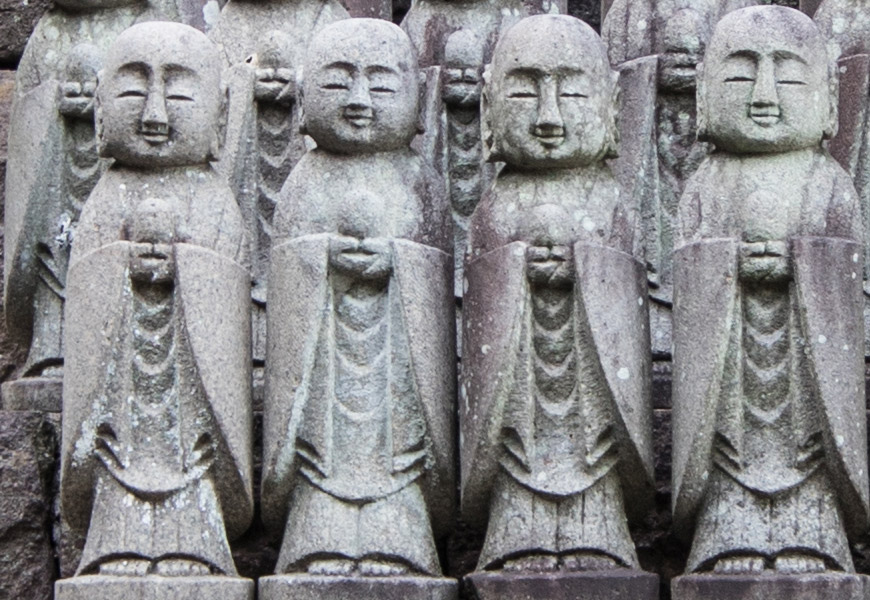
Crop 100%, well rendered textures from the 24MP T7i.
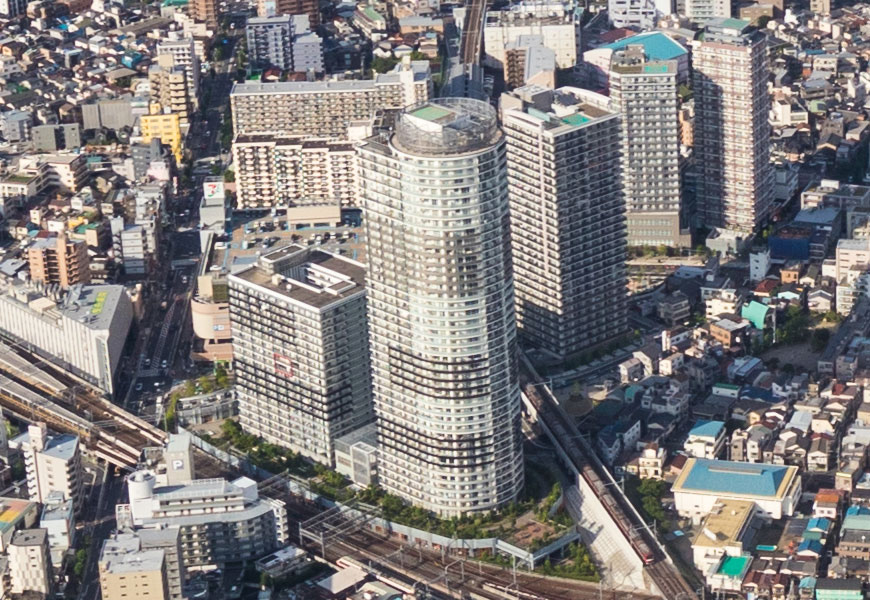
Crop 100%, every window frame from the faraway buildings on a US$699 camera.

Crop 100%, the resolution is so high we can see photos inside of photos.
“Portal” with the EOS T7i + Tamron 10-24mm f/3.5-4.5 Di II VC HDL at f/6.3 1/100 ISO100 @ 10mm; before and after raw treatment.For the high-end photographer the Rebel EOS T7i offers raw output of every picture, to be processed on the computer. Using Canon’s 14-bit compression, these files must be manipulated prior to publishing, and it keeps more shadow and highlight data; ready to be processed like a digital film. The T7i’s raw performance is fair for the APS-C standard: not Sony, not Fuji nor Nikon offers much better files from their smaller sensors, and T7i sticks to this rule. It’s easy to extract up to 3-stops of exposure detail from the highlights; 4-stops from the shadows; with greater quality than even an EOS 6D, given that sensor age. While some extreme compensations (+100 values on Adobe’s Lightroom) do render noisy shadow areas, for the majority of files the T7i is impressive: the colors are mainly intact, no matter the ISO, and incredible for the format.

Crop 100%, pushed shadows with minimum loss in quality.

Crop 100%, extreme shadow recovery reveal color noise.
Pushing the ISO in order to compensate for the lack of light on you exposure have a direct impact on the smoothness of the files. From ISO800 we start to see a fine thread of brighter pixels over the frame, pleasing to look at after print; it really feels we’re working with analog film from a digital sensor. This is constant up to ISO6400, when the noise grain gets so big it takes away some of the colors; again, a fair performance from the APS-C format. It is easy to work at night with smaller aperture lenses (f/3.5 and up), and its relatively large sensor make the T7i a better camera for low-light photography than your smartphone. But it’s limited to ISO12.800: above that it is still possible to shoot, but the colors render a blueish cast on the shadows. There’s also a lack of details, and the highest ISO25.600 should be avoided for high quality captures. But anyway it’s a nice performance, just a few years dedicated only to the full-frame (135) format.
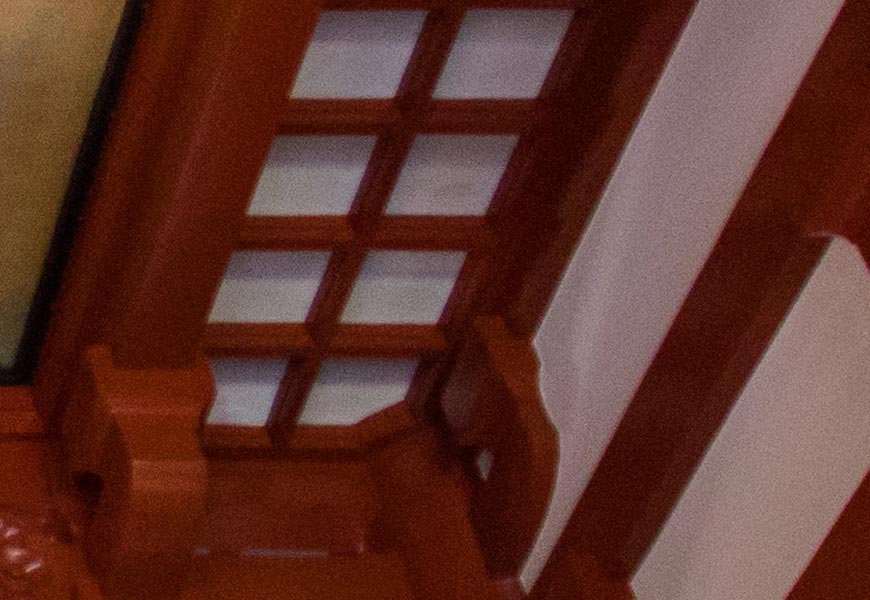
Crop 100%,a light texture is visible as soon as ISO800, but nice to see on paper after printing.

“Cafe” with the EOS T7i + Tamron 10-24mm f/3.5-4.5 Di II VC HDL at f/6.3 1/30 ISO2000 @ 10mm.

Crop 100%, ISO2000 shows erratic luma noise despite the intact colors.

Crop 100%, yes, plenty of noise from ISO12.800, but still impressive for its details.

Crop 100%, the native ISO25.600 should be avoided as it can’t render details.
Another quality that keeps Canon as the leader of the photography market is its color science; always saturated and vibrant. And the T7i keeps that performance identical from any EOS camera: deep reds, perfect to capture the Japanese culture; vivid yellows and oranges, not mixed with greens, great for sunsets; pure blues that vary in intensity, not tone; and red-ish greens, kind of brown-ish, as dark as reality; and strong pinks, used to balance skin tones and the overall white balance. It’s always interesting to talk about colors on vlog do zack, as I can clearly see how every manufacturer deals with it differently. And Canon is the benchmark, again with the T7i.

“Feast” with the EOS T7i + Tamron 10-24mm f/3.5-4.5 Di II VC HDL at f/5.6 1/8 ISO500 @ 10mm.

“Fushimi-Inari” with the EOS T7i + Tamron 10-24mm f/3.5-4.5 Di II VC HDL at f/6.3 1/30 ISO200 @ 10mm.
“Pagoda” with the EOS T7i + Tamron 10-24mm f/3.5-4.5 Di II VC HDL at f/6.3 1/100 ISO100 @ 24mm; before and after raw treatment. Crop 100%, intact shadow recovery from raw files. “Tokyo III” with the EOS T7i + Tamron 10-24mm f/3.5-4.5 Di II VC HDL at f/7.1 1/200 ISO100 @ 10mm; before and after raw treatment. Crop 100%, the DIGIC7 processor seems better than raw files in keeping the details. “Bar” with the EOS T7i + Tamron 10-24mm f/3.5-4.5 Di II VC HDL at f/6.3 1/30 ISO400 @ 24mm; before and after raw treatment. Crop 100%, but we just can’t deny the raw advantage in recovering shadow details. “Árvore II” with the EOS T7i + Tamron 10-24mm f/3.5-4.5 Di II VC HDL at f/6.3 1/100 ISO100 @ 10mm; before and after raw treatment. Crop 100%, difficult exposure are better rendered with raw files.Last but not least, the in-camera JPEG engine is better with the DIGIC7 processor, but far from perfect. Canon has been doing its homework in developing a smarter sharpness mask that detects finer edges on portraits, landscapes and products; but only at the lower ISOs. While the T7i Rebel doesn’t feature detailed adjustments for sharpness like the 5D Mark IV/5DS, its automatic mode is fairly good; the JPEG files comes with nearly the same amount of detail as the post-processed raws, perfect for straight-out-of-camera prints. Also the DIGIC7 is capable of compensating for the diffraction above f/11, further enhancing the details. It’s particularly interesting for the amateur photographers who use automatic exposure modes, biased towards nature ISO and shutter speed values, giving the smaller aperture to solely responsibility to keep the exposure under control. In P “program” mode it’s easy to see the T7i meter a scene as 1/60 ISO100 f/14 under plenty of light; so a picture processing algorithm that’s ready to deal with diffraction is welcomed.
“Loja” with the EOS T7i + Tamron 10-24mm f/3.5-4.5 Di II VC HDL at f/6.3 1/30 ISO2500 @ 24mm; before and after raw treatment. Crop 100%, even with the noise reduction function turned off, the files are bland. “Templo” with the EOS T7i + Tamron 10-24mm f/3.5-4.5 Di II VC HDL at f/5.6 1/10 ISO3200 @ 10mm; before and after raw treatment. Crop 100%, impeccable raw files under low-light. “Cyclist V” with the EOS T7i + Sigma 18-300mm f/3.5-6.3 DC Macro OS HSM C at f/6.3 1/1000 ISO1600 @ 200mm; before and after raw treatment. Crop 100%, good JPEG files from the DIGIC7 processor.But under higher ISOs, the DIGIC7 processor is still too aggressive with the noise footprint, completely eliminating it from the image; giving a watercolour effect to the details. Even with the noise reducer turned off (!), filex with ISO800 and up are smooth, without the pleasing textures from the CMOS sensor. When shooting such files it is better to use the raw output in order to maintain as many details as possible in post-processing; despite making due with different colours than Canon in-camera engine. One last addition to the T7i is the in-camera “raw conversion” menu during playback. It’s possible to render your raw files from the camera with further exposure, contrast, color, tones, shadows, highlights and many effects adjustments in-camera, after the click, just like we do on the computer; but on the camera’s LCD screen. It is perfect to share your files to the smartphone, making due without a mandatory raw+JPEG that uses memory.
The US$699 EOS Rebel T7i is the pinnacle of what Canon’s technology can deliver today, for the smallest price possible. Never in a million years I’d thought Canon would dare to add its Dual Pixel (not easy to manufacture) on the entry-level market, but they also added the new all-cross-type 45-points AF module from the 80D, paired with the all-new DIGIC7 processor (absent even from the 5D Mark IV); the T7i technology is really impressive. Canon went further and pushed the ergonomics to its limits with a solid built, high quality finishing and the elegant controls from even larger cameras; for the first time I can recommend a Rebel camera for the professional market. I mean it: this is a natural upgrade for your aging EOS camera like the 6D, classic 7D and even the 5D Mark III with greater image resolution, up-to -3EV AF performance, Dual Pixel Live View, Wi-Fi, touch screen… And even better image quality. The EOS T7i is everything we expected from a high-end camera, but now for all. Be it for the beginner on the EF/EF-S lens system, or a professional looking for a backup camera, this is the EOS for you. Have fun with it and nice shooting!